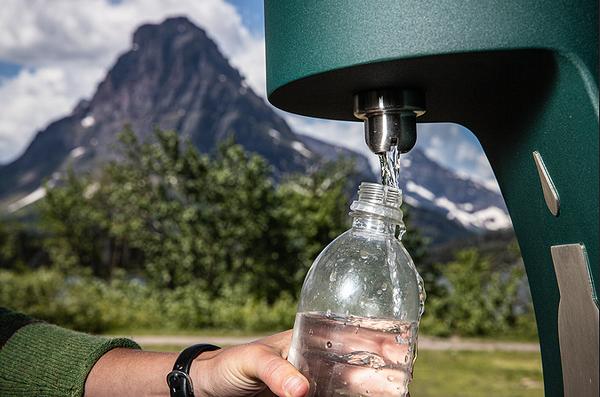
WASHINGTON, DC, November 20, 2024, (ENS) – The U.S. Environmental Protection Agency today launched a new, no-cost technical assistance effort focused on reducing exposure to perfluoroalkyl and polyfluoroalkyl substances (PFAS) and other emerging contaminants in small or disadvantaged communities. The initiative is part of EPA’s Water Technical Assistance program, WaterTA.
PFAS, also known as “forever chemicals,” because are identified by their chemical structure, which includes a chain of fluorine-bonded carbon atoms.
They are found in industrial and commercial products, including: aqueous fire-fighting foam, paper and packaging products, plastics, surfactants, surface coatings, lubricant and oil formulations, cosmetics, nonstick cookware, and textiles.
In April 2024, EPA issued the PFAS National Primary Drinking Water Regulation to protect communities from exposure to harmful PFAS. Exposure to PFAS has been linked to adverse health impacts that include some cancers, liver and heart disease, and immune and developmental damage to infants and children.
People are exposed to PFAS in water mainly through drinking and foods prepared with that water. Household uses, such as cleaning, washing, and bathing, do not result in significant exposure, according to the New York State Department of Health.
The EPA’s WaterTA providers work closely with communities to understand their water infrastructure needs and plan for the future. WaterTA providers are generally nonprofit organizations and public and private nonprofit universities and colleges.
EPA will also share best practices and amplify successes through case studies, fact sheets, webinars, and other resources regarding addressing emerging contaminants, including PFAS.
“The Bipartisan Infrastructure Law is providing a focused opportunity to help small and disadvantaged communities address PFAS and emerging contaminants to ensure that drinking water is clean and safe for residents,” EPA Principal Deputy Assistant Administrator for Water Bruno Pigott said.
Neither perfluorooctanoic acid, PFOA, nor perfluorooctane sulfonic acid, PFOS, are manufactured in the United States any longer, but can still be found in imported products. Their substitutes are also known to negatively affect the thyroid and other organs.
EPA has identified around 120,000 U.S. facilities that may have handled or released PFAS. As of August, 2,067 sites in the United States had detectable levels of PFAS contamination in their drinking water.

The Tackling Emerging Contaminants, TEC, initiative will help eligible public drinking-water systems evaluate emerging contaminant issues, conduct initial water quality testing, and identify next steps in 200 small or disadvantaged communities over the next three years.
“By working hand-in-hand with local partners, the Tackling Emerging Contaminants initiative will help ensure that historically underserved areas have access to safer drinking water that is essential for healthy and vibrant communities,” he said.
The Tackling Emerging Contaminants initiative assists small or disadvantaged communities nationwide to assess and address emerging contaminants and PFAS challenges in their public water system. The initiative offers no-cost services to help water systems develop:
The U.S. Geological Survey estimates that at least 45 percent of U.S. tap water contains PFAS. Incidences of drinking water and military site contamination have been recorded in all 50 U.S. states, but PFAS pollution is not distributed equally. Residents of Black and Latino communities have a higher likelihood of having dangerous concentrations of forever chemicals in their water supply compared to residents of other areas, according to the nonprofit Environmental and Energy Study Institute,
- – Sampling and analysis activities, including initial diagnostic monitoring, sampling plans, laboratory analyses, and water quality evaluation reports.
- – Technical plans, including alternatives analysis, preliminary engineering reports, and source water contaminant identification, mitigation evaluations and plans.
- – Implementation support/funding deliverables, including identifying funding options and preparation of funding application materials such as cost estimates or preliminary engineering reports.
- – Operational training support, including sampling training, operator training for new treatment systems, operation manuals, and standard operating procedures.
- – Community engagement plans, including developing outreach and engagement strategies in collaboration with the water system, identifying community-based partners and stakeholders, identifying and hosting public events and other opportunities to engage with and solicit feedback from community members, and sharing relevant and accessible information with the public.
In addition to providing direct support to communities that helps build water system capacity, TEC WaterTA will produce, fact sheets, case studies, webinars, and other resources to share best practices and amplify successes, increasing the impact of this initiative.
The TEC WaterTA Initiative offers services that help build capacity for a community to apply for funding; it does not provide direct funding.
The EPA’s free Water Technical Assistance, WaterTA, services may include:
- – Identifying lead pipes for removal
- – Enhancing resilience against cybersecurity threats
- – Identifying climate adaptation strategies
- – Providing resources for workforce development
- – Addressing stormwater challenges
- – Complying with the Safe Drinking Water and Clean Water Acts
- – Applying for federal funding to make these solutions a reality
President Joe Biden’s Bipartisan Infrastructure Law has provided an unprecedented $50 billion to improve water infrastructure across the nation. Of this funding, $5 billion is dedicated to the Emerging Contaminants in Small or Disadvantaged Communities grant program, which supports this latest technical assistance initiative.
EPA’s free water technical assistance initiatives help communities identify their water challenges, develop plans, build capacity, and develop their application materials to access federal funding.
The Tackling Emerging Contaminants initiative builds on EPA’s robust suite of technical assistance programs and includes diagnostic water quality sampling and analysis, source water assessment, preliminary treatment design and evaluations, operational and sampling training, and identifying solutions to address emerging contaminants and PFAS contamination including community engagement and outreach support.

The family of compounds known as per- and polyfluoroalkyl substances (PFAS) used in consumer and industrial manufacturing are persistent in the environment; they don’t break down and accumulate over time.
The PFAS group includes over 6,000 compounds. Of these, the best known are perfluorooctanesulfonic acid (PFOS) and perfluorooctanoic acid (PFOA) because they are very persistent in both the environment and in the human body.
Because PFAS chemicals do not break down over time, a recent study suggests that as many as 200 million Americans drink water that has exposed them to PFAS.
Even bottled water can contain PFAS chemicals. A 2020 study by Consumer Reports shows that almost all bottled water they tested contained detectable amounts of PFAS, however, most didn’t exceed one part per trillion.
The FDA regulates certain PFAS used in food packaging. In 2020, the FDA announced that three manufacturers would phase out PFAS-containing food contact substances by 2023. In February 2024, the FDA announced that manufacturers are no longer selling PFAS-containing grease-proofing substances for food contact use in the U.S.
Clean Water Progress Has Been Made
Drinking water: In March 2023, EPA proposed a National Primary Drinking Water Regulation that sets a limit of four parts per trillion (ppt) for PFOA and PFOS. Drinking water authorities must comply with the new maximum contaminant levels by 2029.
New use rule: In January 2024, the EPA finalized a rule that prevents companies from starting or resuming the manufacture or processing of 329 PFAS without an EPA review and risk determination.
Air emissions: The EPA is developing technical basis for regulating specific PFAS as hazardous air pollutants.
Juvenile products: Nine states have adopted restrictions on PFAS in juvenile products: California, Colorado, Connecticut, Maine, Minnesota, New Hampshire, Oregon, Rhode Island and Vermont.
Menstrual products: Eight states have enacted phase-outs of PFAS in menstrual products: California, Colorado, Connecticut, Maine, Minnesota, New Hampshire, Rhode Island and Vermont.
Personal care products: Eleven states have adopted restrictions on PFAS in cosmetics: California, Colorado, Connecticut, Maine, Maryland, Minnesota, New Hampshire, Oregon, Rhode Island, Vermont, and Washington.
Retailer action: 32 unique retail chains with more than 150,000 stores and more than $654 billion in sales have committed to eliminating or reducing PFAS in food packaging, textiles and/or other products. Restaurant Brands International, which owns Burger King, Popeyes, and Tim Hortons, announced in March 2022 that it will ban added PFAS in food packaging globally by 2025. McDonald’s said in January 2021 that it would remove added PFAS from “guest packaging materials globally by 2025.” Starbucks, Taco Bell, Chipotle and other food retailers have made similar promises.
Although the use of perfluorooctanoic acid (PFOA) is being phased out, the chemical is still used to make household and commercial products that resist heat and repel stains. Perfluorooctane sulfonic acid (PFOS) is still used in fire-fighting foam.
Communities can learn more about EPA’s new Tackling Emerging Contaminants initiative, on EPA’s WaterTA website.
South Carolina Court Makes 3M Pay Up
On March 29, the U.S. District Court in Charleston, South Carolina, gave final approval for chemical manufacturer 3M’s $10.3 to $12.5 billion settlement agreement with U.S. public water suppliers, PWS, to address PFAS contamination in drinking water.
The agreement will support public water suppliers that detect PFAS at any level or may do so in the future. Payments under the agreement are scheduled to begin in the third quarter of 2024 and will continue for 13 years, provided there are no pending appeals of the final approval order.
The Biden-Harris administration has delivered on several key promises to tackle PFAS contamination by regulating the chemicals in drinking water, designating PFAS as hazardous substances under the federal Superfund law, ending government purchases of some products containing PFAS, and funding additional research into the chemicals.
EPA’s new standards for PFAS in drinking water, announced In April, require public water systems to complete initial monitoring for PFAS by 2027. Water systems have until 2029 to comply with new, stringent levels of PFAS allowed in drinking water.
The EPA has added 196 PFAS to the Toxics Release Inventory in response to a congressional mandate. A listing requires facilities to report releases of those PFAS into the environment. The EPA in October 2023 closed a loophole in TRI reporting that had allowed many manufacturers to evade reporting requirements.

The agency in April 2024 designated PFOA and PFOS as hazardous substances under the Superfund law. The designation will jumpstart PFAS cleanups and help the EPA hold polluters accountable.
The Department of Defense has tested for PFAS at military installations but made little to no progress cleaning up contamination, and drinking water remains threatened.
So as of October 31, 2024, up to 95 million people in the Lower 48 states – more than 20 percent of the country’s population – may rely on groundwater that contains detectable concentrations of PFAS for their drinking water supplies, according to a new U.S Geological Survey study.
The USGS study can help members of the public, water suppliers and regulators understand the potential for PFAS contamination, guide future studies, and inform strategic planning for water resources.
USGS scientists are the first to report national estimates of PFAS occurrence in untreated groundwater that supplies water to public and private wells. This research provides the first estimate of the number of people across the country who are potentially affected by PFAS-contaminated groundwater.
Along with a scientific report, the USGS published an interactive, online map so users can see probability estimates of PFAS occurrence in groundwater.
Featured image: Dry Beaver Creek in Woods Canyon, Coconino National Forest, Arizona. February 15, 2017. (Photo by Deborah Lee Soltesz / U.S. Forest Service)
© 2024, Environment News Service. All rights reserved. Content may be quoted only with proper attribution and a direct link to the original article. Full reproduction is prohibited.



